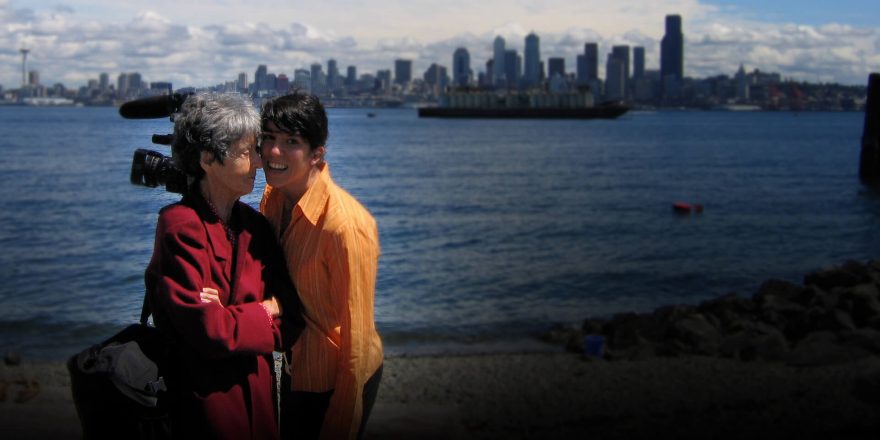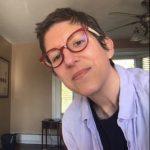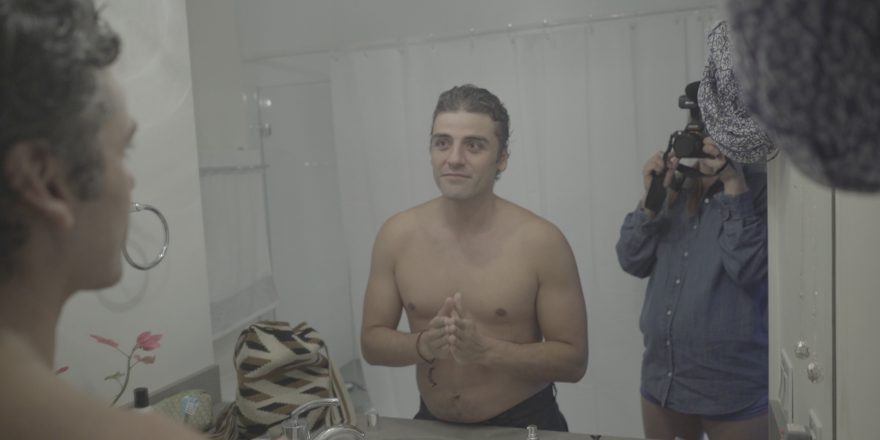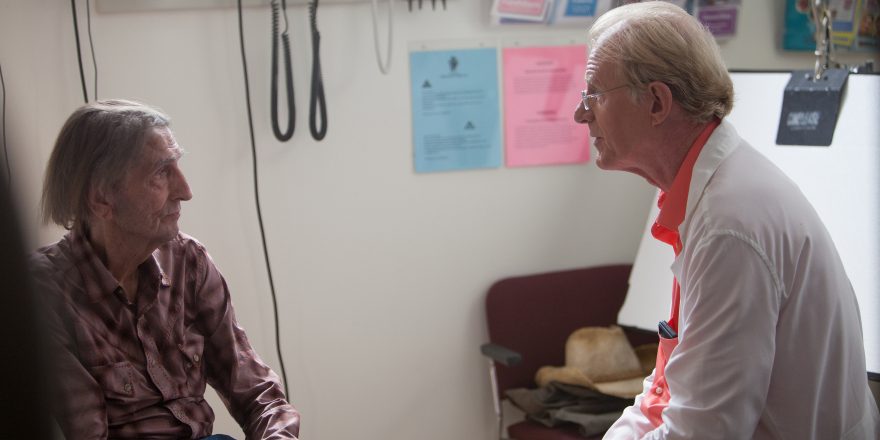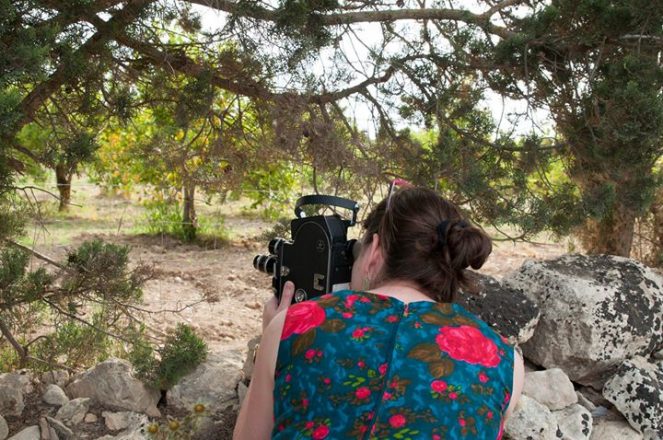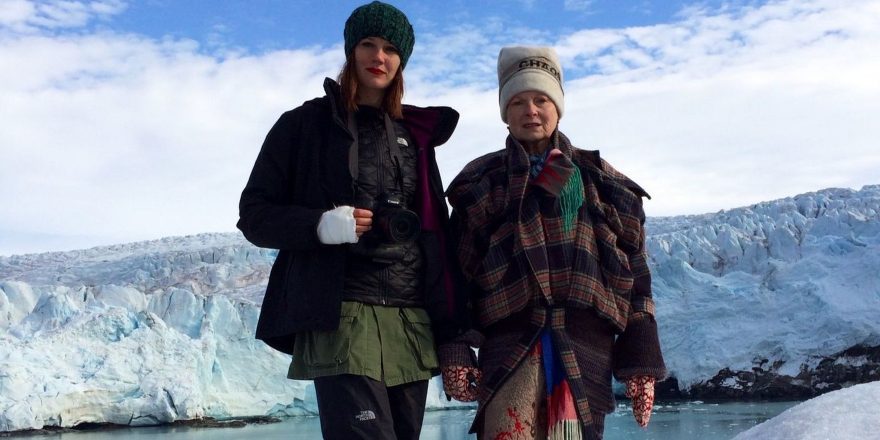When you work on a documentary film for 15 years, a certain kind of resignation sets in. A more hopeful word for it might be surrender. When people would ask how the film turned out, I’d say it was still turning. I joked to those who inquired that the project I began in 2003 would premiere in 2025. But as time went on, and bulky hard drives piled up and the editing software I started on became obsolete, the “joke” felt more and more like it was on me. So you can imagine the sheer amount of delight and relief I felt when, in 2017, I finally finished The Rest I Make Up, my film collaboration with María Irene Fornés – a visionary Cuban-American playwright who was losing her memories, but not her creativity, to dementia. A few months later, I practically fell out of my chair when I opened an email inviting the film to have its world premiere at the Museum of Modern Art’s 2018 Doc Fortnight in New York City. Suddenly, all of those years faded into a flashback, and the narrative shifted from one of surrender to one of steely determination. Stories take as long as they take, right? And this one was finally finished, or so I thought.
About a week after opening that email, a doctor diagnosed me with breast cancer.
“What do you do?” A nurse asked me in a beige room, the first of what would be an epic series of beige rooms. It seemed silly to say that I was a filmmaker, since I had only made one film, and to be honest, at the time the film couldn’t have been further from my mind. I was much more interested in the word “metastatic” on my chart. “That means it’s spread?” Yes, she said, but hopefully not far. So, what do you do then? MRI and CT scans, ultrasounds, blood work, more blood work, and then you cross your fingers, pray to the winds, and wait. And while you’re waiting, make sure you upload some hi-res photos of your film to use for publicity and try not to think that you may be dead before your premiere.
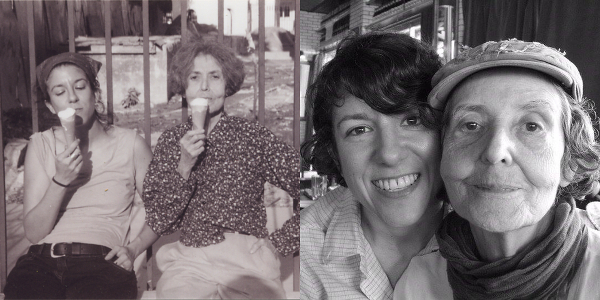
“Is this part of your story?” I ask Irene (as Fornés preferred to be called) in the film, after returning from a doctor’s visit to address her memory loss. “I prefer not to hide anything,” she says. “If you expose anything about you, the good, the medium and the bad, you are a freer person, a healthier person.” When I first met Irene, I was an insecure 25-year-old, just coming out of the closet, and I clung to her words like talismans. Now as a 44-year-old confronting cancer, they had a new, heightened resonance. “In shutting oneself off,” you can see her tell me in Cuba in 2004, “you miss a lot of things that you could enjoy, and things you could learn and expand yourself and become a really vital and interesting person.” She would never let a disease – or anything else, for that matter – limit her.
Soon I began my treatment for Stage Two breast cancer. Thankfully, they had caught it early. First, there would be chemo to shrink the tumors, then surgery to remove them, and then radiation to irradiate anything that remained. I would definitely lose my hair, the doctors told me. “When?” I asked. “In about eight weeks.” That put me at the beginning of February – our world premiere would be about two weeks after. Nausea? Neuropathy? No problem. I’d much rather fixate on the fact that I’d be bald and eyebrow-less for my first Q&A. I started buying hats like boxes of Kleenex. “This one’s softer but that one will look better in the light.” Beanies. Bomber hats. Fedoras. A friend came over with clippers and gave me a buzz cut. Awed by the kindness and all-knowingness of my nurses and oncologists, I soon settled into a different kind of surrender. “Right now, it’s like this: You have a thing, and you made a thing.”
I stopped Googling cancer survival rates and continued submitting to film festivals. I visited Irene at Amsterdam Nursing Home as much as I could before officially starting chemo, knowing my immunity was about to plummet and places like nursing homes would be off-limits.

People often ask if Irene remembered me during those visits, years after we’d finished filming. By 2018, Irene had been living with dementia for close to two decades. She was still responding to touch and music and the presence of people, but she spoke very little and often didn’t open her eyes. She was far past the point of responding to visitors by name, but I do believe she knew someone was there, holding her hand. I remember I once asked her if you could love something if you can’t remember its name. She laughed. “That’s the most ridiculous question in the world. Yes. You will love it more.” At another point, I remember I asked if she knew who I was. “I don’t know who you are but I know what you are,” she said. “You’re an artist.” Always, even years into her forgetting, she saw something in me that I couldn’t see in myself.
On the chemo ward during my infusions, all my oncology nurses wanted to talk about was the premiere. The premiere and how I was going to protect myself during it. Wear a mask. Wear gloves. Wash your hands every 15 minutes. Try a side-hug. A side-hug? Stay away from people sneezing or wheezing or coughing. I had stopped taking the subway during treatment and this was going to be my first real outing with a conspicuously low white cell count. But a mask and gloves? I just couldn’t do it. What if I stuffed bottles of hand-sanitizer in my pockets and tried the side-hug? They conceded. I heard from MoMA that the film had sold out in 48 hours. 400 seats filled with people I couldn’t hug – dozens of whom had waited 15 years for this moment, myself included.
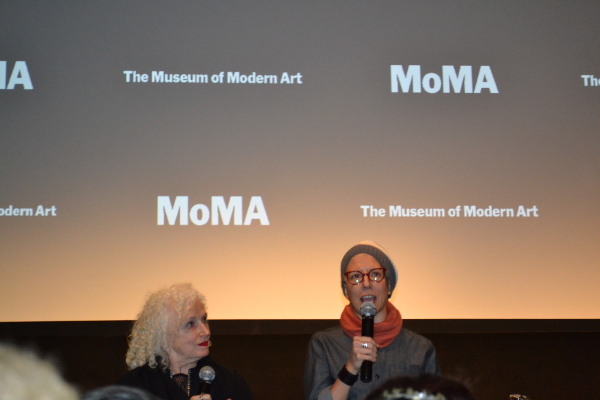
“Who cares about who understands it, whether they like it or not,” Irene once said to me. “Any kind of writing, whether it’s a play or a poem or whatever, is for the artist to express what he has inside himself that they want to express.” Irene never had trouble standing in front of an audience or a cast, expressing exactly what she needed to express. She didn’t make excuses or compromises. She did what she had to do. She did what she wanted to do. She did what brought her joy.
On the night of our world premiere, I sat far in the back of the theater, next to my life partner (and one of the film’s producers) Katie Pearl. I wore big red glasses and a knit hat that kept sliding off my smooth, shiny head. I watched the sea of people enter and sit. I clenched Katie’s hand. I thought of Irene at the nursing home and what a kick she would have gotten from seeing the crowd there, all amassed to see her big-screen debut. “What would Irene do?” became that night’s mantra. So when the film was finished, credits rolling, and MoMA’s Doc Fortnight curator Kathy Brew scooped me up for the Q&A, all my fears fell away. I was no longer a cancer patient, or the insecure 20-something I am in the film. I had a job to do, to not only represent the film and Irene but to thank everyone in that audience who had supported and buoyed us for more than a decade. As I walked down to the screen, the entire crowd stood – cheering for Irene, cheering for us both. And when I turned to face them, I finally felt like I could let go. I completely forgot how perennially terrified I had been of public speaking. “This is for Irene,” I remember thinking to myself, over and over. And when someone asked, “What’s next?” I had to laugh. Remission? Honestly, beyond treatment, I had no idea.
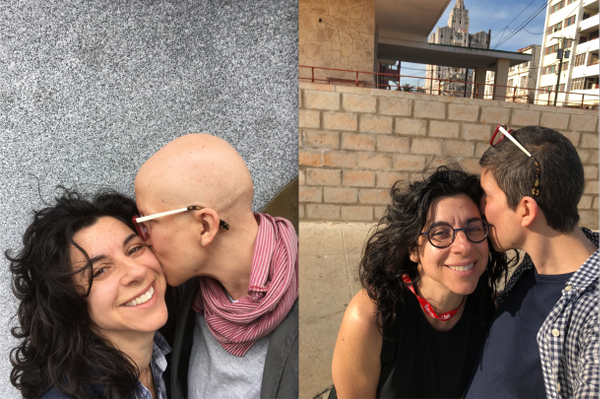
“How’s the movie going to end?” I asked Irene in Havana in 2004. “I will figure it out, but first I have to find the melody to sing it,” she said. Then, on October 30, 2018, at the age of 88, Irene died at Amsterdam Nursing Home. Her pulse just slipped away. A close friend was with her at the time, holding her hand, and we arrived 30 minutes later. I kissed her forehead, whispered “Thank You” into her ear, and sat still and quiet for some time. The night before, I had screened the film in Downtown Manhattan and was surprised to find my oncologist in the audience. “You did it,” he said to me after. I wasn’t sure if he was referring to the film or to finishing cancer treatment. “Yeah,” I said, hugging him. “I guess I did.”
Featured image by Michael Smith. All images courtesy of Michelle Memran.


